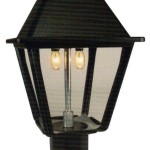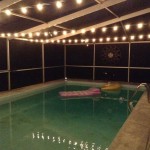Photo Sensors for Outdoor Light Fixtures: Enhancing Safety and Efficiency
Outdoor lighting plays a crucial role in enhancing security, promoting visibility, and creating a welcoming ambiance. However, manually controlling these lights can be inconvenient and wasteful. Photo sensors, also known as light sensors, offer a convenient and energy-efficient solution by automatically turning lights on and off based on ambient light levels. This article explores the functionality, benefits, and different types of photo sensors commonly used in outdoor light fixtures.
Functionality and Working Principle of Photo Sensors
Photo sensors operate on the principle of photoconductivity. They contain a light-sensitive element, typically a photoresistor or photodiode, that changes its electrical resistance based on the intensity of light falling on it. When the ambient light level drops below a predetermined threshold, the resistance of the photo sensor increases, triggering the activation of the connected lights. Conversely, when the light level rises above the threshold, the resistance decreases, turning the lights off.
Most photo sensors are designed with adjustable sensitivity settings, allowing users to customize the light threshold for activation. This enables flexibility in adapting the sensor to different environments and desired lighting patterns. Photo sensors can also be integrated with timers to provide additional control over lighting operation. For instance, a timer can set a specific time for the lights to turn off, regardless of the ambient light level.
Advantages of Using Photo Sensors in Outdoor Light Fixtures
Photo sensors offer several advantages for outdoor lighting applications, promoting energy efficiency, safety, and convenience:
Energy Efficiency
By automatically turning lights on and off as needed, photo sensors significantly reduce energy consumption and lower electricity bills. Lights are only activated during periods of darkness, eliminating the need for manual control and preventing unnecessary illumination during daylight hours. This is particularly beneficial in areas with extended periods of darkness, such as during winter months.
Enhanced Security
Photo sensors contribute to enhanced security by automatically illuminating areas when darkness sets in. This provides a deterrent to potential intruders and improves visibility, making it easier for residents to identify and monitor their surroundings. By reliably activating lights at dusk, photo sensors ensure consistent illumination, reducing the likelihood of blind spots or areas of darkness that could be exploited by criminals.
Convenience and Automation
Photo sensors eliminate the need for manual control, simplifying lighting management and reducing the hassle of turning lights on and off. This is especially valuable for remote or hard-to-reach locations where manual access to switches may be challenging. The automatic operation of photo sensors ensures that outdoor lights are always activated when required, providing peace of mind and convenience.
Types of Photo Sensors
Photo sensors come in various forms, each designed for specific applications and functionalities:
Passive Infrared (PIR) Sensors
PIR sensors detect changes in infrared radiation emitted by moving objects. This makes them ideal for motion-activated lighting, where lights only turn on when movement is detected. PIR sensors are commonly used in security lighting systems and outdoor pathways.
Photovoltaic Sensors
Photovoltaic sensors, also known as solar panels, convert sunlight into electricity to power the lights. This eliminates the need for external power sources and makes them suitable for remote or off-grid applications.
Dusk-to-Dawn Sensors
Dusk-to-dawn sensors are designed to activate lights at dusk and turn them off at dawn. These sensors are typically used in residential and commercial applications where consistent illumination throughout the night is desired.
Conclusion
Photo sensors are an invaluable asset for outdoor lighting applications, offering significant advantages in terms of energy efficiency, safety, and convenience. By automatically controlling the activation of lights based on ambient light levels, photo sensors promote responsible energy use and enhance security, creating a safer and more welcoming environment. The diverse range of photo sensor types allows for customization based on specific lighting needs and preferences, making them a versatile and beneficial technology for outdoor lighting installations.

Outdoor Motion Sensor Lights Lamps Plus

Led Outdoor Wall Light Dusk Dawn Sensor White Water Glass

Can You Add Motion Sensors To Existing Outdoor Lights Led Lighting Info

Dusk To Dawn Motion Sensor Outdoor Porch Lights With Gfci Waterproof Light Fixture Anti Rust Exterior Wall Mount 3 Modes For House Garage Bulb Not Included Com

Emliviar Motion Sensor Outdoor Light Dusk To Dawn Modern Outd

Outdoor Porch Light With Gfci For House Dusk To Dawn Motion Sensor Fixture Exterior Work Security Waterproof Anti Rust Wall Lantern Balcony Garage Bulb Not Include Com

Stan 15 1 2 High Gray Wood Dual Bright Motion Sensor Outdoor Light 71p59 Lamps Plus

John Timberland Stan Rustic Farmhouse Outdoor Wall Light Fixture Gray Faux Wood Black Motion Sensor 15 1 2 Clear Ribbed Glass For Post Exterior Barn Target

Pin On For The Home

Motion Sensor And Dusk To Dawn Decorative Outdoor Lighting Deep Discount
Related Posts







